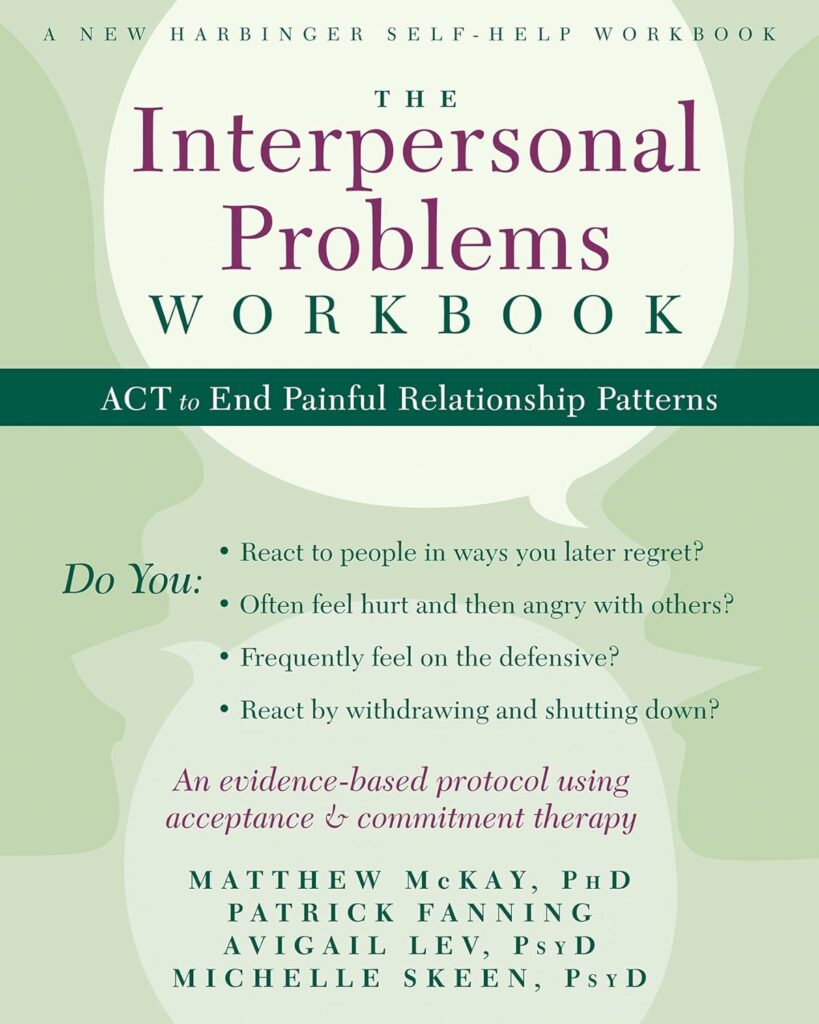Choosing the right therapeutic approach can be pivotal in navigating mental health. Exploring CBT and ACT offers valuable insights into two evidence-based options. You might wonder how each therapy operates and which might suit your needs. This guide introduces you to the core principles, treatment strategies, and potential benefits of Cognitive Behavioral Therapy and Acceptance and Commitment Therapy, equipping you with the knowledge to make an informed choice without delving too deep into medical jargon or exhaustive detail too soon.
Delving into Cognitive Behavioral Therapy (CBT)

CBT plays a significant role in the field of psychotherapy. It shines light on the intricate relationship between a person’s thoughts, feelings, and behaviors, illuminating patterns that could potentially trigger mental health issues. Imagine a therapy that does not dwell on the past but focuses on the here and now, helping individuals to develop more balanced, realistic thinking patterns to change their views on situations they encounter. CBT delivers this promise in a structured manner, with time-limited, planned sessions that typically occur weekly or bi-weekly.
The effectiveness of this approach in treating anxiety disorders lies in its ability to alter anxiety-inducing thought patterns, thus enhancing emotional well-being.
The Mechanics of CBT: How It Works
At the heart of CBT are transient mental events known as cognitive distortions – exaggerated patterns of thought not based on facts, often leading to negative views such as overgeneralization and jumping to conclusions. Cognitive restructuring, a key practice within CBT, focuses on modifying these distortions to foster a more positive outlook and improve mood.
CBT goes beyond merely identifying distortions. It challenges them head-on, reframing situations to provide a more realistic or positive interpretation, thus expanding the individual’s perspective beyond the distortions. But what makes CBT truly effective is its application outside the therapy room. Homework assignments play a critical role in helping clients apply learned strategies to real-life situations, thereby managing distortions and engaging in healthier thinking patterns.
CBT’s Focus on the Present

CBT places significant emphasis on present moment awareness. Techniques such as self-monitoring enhance awareness of one’s behaviors and symptoms, thereby encouraging the regulation of those behaviors for improved life quality. This focus on the present moment is further highlighted in goal setting, which assists individuals to approach personal objectives in a way that boosts mood and enhances life quality.
Furthermore, CBT provides individuals with useful tools for managing stress. Some of these tools include:
- Diaphragmatic breathing, which is taught as a coping mechanism to manage anxiety by reducing physical tension
- Progressive muscle relaxation, where clients learn to tense and relax muscle groups, which helps in relieving stress
- The strategy of listing pros and cons, which aids in making informed decisions, particularly when feeling stuck between options.
These tools can be effective in helping individuals manage and reduce stress in their lives.
Achieving Change Through CBT Techniques
The design of CBT techniques is aimed at facilitating change through behavior change strategies. Cognitive restructuring, a foundational CBT technique, involves identifying and altering cognitive distortions to foster healthier thought patterns. Behavioral interventions, such as contingency management and skills training, modify behavior by altering consequences and environmental triggers.
But CBT’s versatility doesn’t end there. Mindfulness exercises in CBT encourage present moment focus, helping reduce rumination on negative thoughts and improve emotional regulation. These exercises serve as a fitting testament to the multifaceted approach of CBT, underpinning its effectiveness in fostering well-being.
Unpacking Acceptance and Commitment Therapy (ACT)

While CBT focuses on the interplay between thoughts, feelings, and behaviors, Acceptance and Commitment Therapy (ACT) charts a different course. ACT is built on the foundation of Relational Frame Theory, which explains how cognitive fusion can lead to the detriment of avoiding experiences.
Rather than striving to change thoughts or feelings, ACT aims to cultivate psychological flexibility, allowing individuals to:
- Be present
- Be open to new experiences
- Be accepting of a wide range of emotions
- Pursue actions aligned with their values.
This approach has been widely embraced in clinical settings and research, helping individuals face various mental health challenges, including chronic pain and substance abuse, with the support of a mental health professional.
ACT’s Unique Approach to Mental Health
ACT stands out in its approach to mental health by applying acceptance to private experiences and identifying life aspects that can be realistically changed through committed action. Imagine a therapy that encourages you to perceive your thoughts merely as thoughts rather than facts or imperative commands. This is cognitive defusion, a key component of ACT, which enhances one’s control over behaviors.
Mindfulness practices within ACT aid clients in distinguishing between direct experience and their stories about those experiences, leading to decreased impact of unhelpful thoughts. By emphasizing commitment to living a life aligned with chosen values, ACT supports clients in establishing a new relationship with their emotions, guiding them towards a fulfilling life.
It’s through these value-driven actions that ACT enhances psychological flexibility, empowering individuals to adapt to life’s challenges while improving their overall quality of life.
Core Components of ACT
The core components of ACT work together synergistically. Acceptance, a crucial role player, promotes the idea that stress and struggle are inherent parts of life, countering the tendency to avoid negative thoughts and feelings, which can worsen clinical issues. Mindfulness in ACT develops a non-judgmental awareness of the present moment, helping clients experience internal events such as thoughts and feelings without the need to change them.
Cognitive defusion in ACT involves techniques that help individuals distance themselves from their thoughts, thereby diminishing their ability to dictate behavior. This is complemented by the self-as-context component, which allows clients to adopt a broader perspective of themselves beyond their immediate thoughts and emotions, fostering greater psychological flexibility. Values clarification exercises in ACT assist individuals in discerning their true life aspirations and commit to actions congruent with these personal values.
The Therapist’s Role in Facilitating ACT
In ACT, the therapist’s role includes:
- Being a compassionate collaborator
- Helping clients navigate the therapeutic process
- Assisting in synthesizing clients’ personal values with committed actions
- Ensuring intentional and purposeful steps towards a meaningful life
Throughout ACT, the therapist aids clients in the application of acceptance, cognitive defusion, and mindfulness as fundamental principles in their lives. Mindfulness exercises, designed to be short and adaptable, empower clients to incorporate these skills into their everyday routine. This role of the therapist in facilitating ACT underscores the therapy’s holistic approach towards mental health.
Comparing and Contrasting CBT and ACT
Although CBT and ACT have both demonstrated their value in psychotherapy, they are distinct therapies grounded in different theoretical bases. CBT emphasizes the identification of negative behaviors and problems, as well as problem-solving and behavior change. It is a structured and goal-oriented approach that aims to address these issues effectively. In contrast, ACT emphasizes developing mindfulness, acceptance, and values-based action.
These differences underline the importance of understanding the unique aspects of each therapy and choosing the one that aligns best with an individual’s preferences and treatment goals.
When to Choose CBT Over ACT
For individuals needing to confront and change specific negative thought patterns and behaviors, CBT could be the preferred therapy. Techniques like cognitive restructuring challenge distortions and reframe thinking, fostering a more positive outlook.
Clients who prefer a more structured approach to therapy may find CBT beneficial due to its focus on developing specific strategies to manage thoughts and behaviors. CBT is suitable for scenarios where clients are looking for specific outcomes, as it sets clear goals and tracks progress through structured sessions.
Moreover, when clients prioritize developing coping skills over learning acceptance strategies, CBT might be their preferred therapeutic approach.
When ACT Might Be the Better Choice
Conversely, for those who prefer to accept their thoughts instead of altering them and who strive to align their behavior with personal values, ACT emerges as the ideal therapy. ACT, also known as act therapy, fosters commitment to actions that lead toward living a meaningful life, despite ongoing anxiety.
ACT incorporates strategies like mindfulness and cognitive flexibility to help individuals deal with the physical sensations and emotional distress associated with anxiety. Instead of trying to control or eliminate anxiety, ACT focuses on improving everyday function and encourages exposure to anxiety-inducing situations to build acceptance.
Implementing CBT and ACT in Treating Anxiety Disorders

The daunting nature of anxiety disorders can significantly impact one’s mental state. However, with the right therapeutic approach, these shadows can be dispelled. Both CBT and ACT can play a crucial role in treating anxiety disorders, using tailored strategies to address specific symptoms and challenges.
Both the structured sessions of CBT and ACT’s emphasis on acceptance and mindfulness offer strong methodologies for combating anxiety.
CBT Strategies Against Anxiety
CBT brings a host of strategies to the battle against anxiety. It helps eliminate avoidant and safety-seeking behaviors by correcting faulty beliefs and facilitating stress management. Exposure therapy, a central behavioral strategy in CBT, is designed to reduce avoidance of feared stimuli and events, encouraging patients to confront these situations.
Systematic exposure enables individuals to gradually approach what they fear, effectively treating anxiety disorders like PTSD, phobias, and OCD. Behavioral experiments encourage patients to test their maladaptive beliefs by engaging in activities that challenge these beliefs. Such targeted strategies make CBT an effective arsenal against anxiety.
The Role of ACT in Managing Anxiety
ACT offers a different lens to view and manage anxiety. It encourages individuals to:
- Accept their anxiety as a natural part of the human experience
- Emphasize alignment with personal values
- Foster commitment to actions that lead toward living a meaningful life, despite ongoing anxiety.
ACT incorporates strategies like mindfulness and cognitive flexibility to help individuals deal with the physical sensations and emotional distress associated with anxiety. Instead of trying to control or eliminate anxiety, ACT focuses on improving everyday function and encourages exposure to anxiety-inducing situations to build acceptance.
Integrating Mindfulness Practices in Therapy

Incorporating mindfulness practices in therapy is akin to enriching a dish with added spices. It enhances the flavor, making the therapeutic journey more palatable. Mindfulness practices can enhance cognitive-behavioral therapy (CBT) for emotional disorders by increasing emotional awareness and regulation, cognitive flexibility, and goal-based behaviors.
Mindfulness, when integrated into CBT and ACT, has been confirmed to be comparably effective as part of a comprehensive treatment approach for anxiety and depression. From mindfulness-based stress reduction to mindfulness-based cognitive therapy, these serve as complementary strategies to CBT when addressing anxiety and stress disorders.
This integration of mindfulness into therapy underscores the holistic approach towards mental health treatment.
Tailoring Therapy to Individual Needs
Personalizing therapy to meet individual needs can be compared to customizing a garment for a perfect fit. It enhances the efficacy of the therapy, ensuring that it addresses the unique needs and mental health challenges of the individual. Expert clinical decision-making, aided by computer simulation and computerized clinical decision support systems, can pave the way forward for personalized psychiatric rehabilitation.
Adaptability in therapeutic approaches, such as the use of metaphors and experiential exercises in ACT, can enhance therapy’s relevance and engagement across different cultural backgrounds. Tailoring therapy to individual needs, therefore, emerges as a crucial strategy in improving healthcare and enhancing mental health outcomes.
Summary
In the journey through the labyrinth of mental health therapies, we’ve explored the unique landscapes of Cognitive Behavioral Therapy (CBT) and Acceptance and Commitment Therapy (ACT). From the change-focused approach of CBT to the acceptance-based strategies of ACT, we’ve seen how these therapies offer robust frameworks for managing mental health challenges. Regardless of the therapeutic approach chosen, the key lies in personalizing therapy to individual needs, ensuring a perfect fit for each unique mental health journey. Remember, the journey of a thousand miles begins with a single step, and the first step towards mental health recovery could just be exploring these therapies.









































